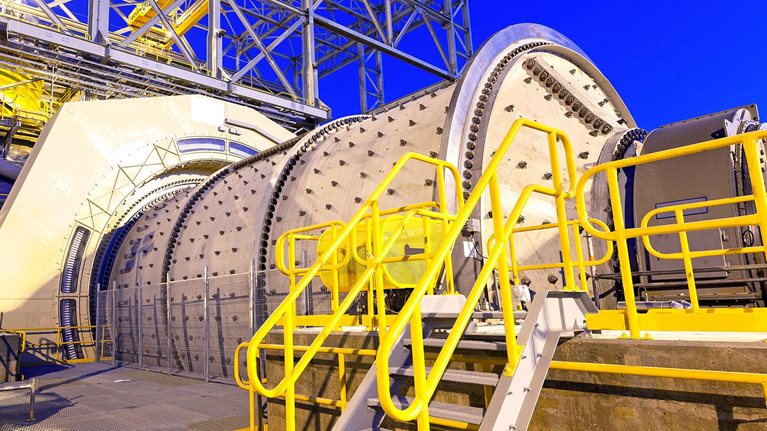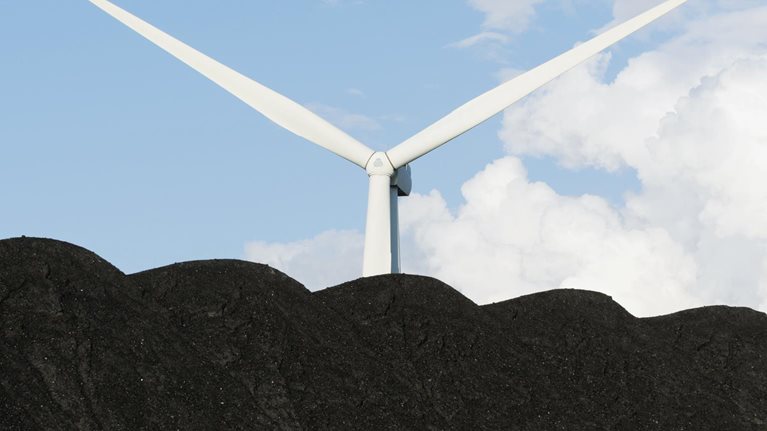In December 2015, at the UN Climate Change Conference (COP21) in Paris, governments around the world committed to legally binding targets to limit global temperature rises to no more than 2°C.1 Yet current commitments fall well short of what is required: the United Nations estimates that greenhouse-gas emissions are set to rise by 11 percent from 2010 to 2030, and growing emissions put us on a pathway to a global temperature rise of 2.8°C by the end of the century.2
Achieving Paris Agreement commitments will require a “wide-ranging, large-scale, rapid, and systemic transformation” founded on electrification and a shift to renewable energy, according to a report from the UN Environment Programme.3 The International Energy Agency (IEA) estimates that renewable energy will need to account for at least 65 percent of global electricity generation by 2030.4 At the same time, industry will have to increase electricity demand (as a share of the total energy mix) to 35.0 percent in 2030, versus 28.5 percent in 2019. And electric vehicles (EVs) will need to account for anywhere from 35.0 to 95.0 percent of light-vehicle sales by 2030 (increased from 8.3 percent in 2021).
Crucially, this transition can’t happen without the availability of certain metals that are essential to battery electrification, including copper, lithium, nickel, cobalt, and some rare earth elements. Annual copper production (the foundation of electrification infrastructure) will need to increase by 11.5 million metric tons (45 percent) by 2031—equivalent to doubling production from the top four copper-producing countries. Demand for lithium, nickel, and cobalt (the core battery metals) is expected to increase by 8.0 times, 2.0 times, and 1.8 times, respectively. And the availability of rare earth metals (crucial components of electric motors) will need to double.5
To understand whether the sector is on track to reach this demand, McKinsey’s proprietary solution MineSpans has tracked more than 5,000 mines and development projects, giving a granular, bottom-up view of how this issue is evolving. According to McKinsey analysis, meeting the growth in demand for copper and nickel will require $250 billion to $350 billion in cumulative capital expenditures by 2030. This investment would serve to both grow and replenish existing capacity.6
Successfully scaling production of metals critical to the energy transition will require collaboration among all players—operators, innovators, and governments—for the benefit of all. Governments can consider how to ensure good environmental and societal stewardship while enabling efficient and transparent permitting processes for assets essential to the transition so that they reach commercial production as quickly as possible. In turn, mining companies can ensure robust environmental stewardship, comprehensive benefits, and fair community engagement.
How to accelerate sustainable production of critical minerals
Accelerating supply is complicated. According to the US Geological Survey, the world has five billion metric tons of known copper resources.7 Of these, approximately 870 million metric tons constitute the global “reserve” and could be mined economically. This global reserve has increased by 3.4 percent per year since 1950, despite ongoing production, and the ratio of the reserve to current production—the reserve life—has remained constant at 35 to 40 years. Most other critical commodities follow a similar story: lithium, nickel, and cobalt all have reserve lives of more than 35 years.
Despite this geological abundance, ramping up production remains a challenge. The industry consistently points to the regulatory landscape as one of the factors affecting the conversion of reserves to production. Ragnar Udd, BHP’s president of minerals, Americas, summed up the situation from a miner’s perspective at the 2022 World Copper Conference in Santiago, Chile. Addressing BHP’s situation in Chile, he said, “We love Chile. We would like to stay here. We would like to grow in this country. But in order to do that, it will require fiscal stability, legal certainty and a clear pathway to permit.”8 In some major jurisdictions, mine permitting alone—not including financing, construction, or ramp-up—routinely takes up to ten years.9
Reducing uncertainty
Important factors in addressing the energy transition include adopting best practices for efficient decision making around permitting, matching incentives to policy priorities and equitable division of benefits across all parties, and supporting responsible environmental practices.
Without examining the merits of individual mining projects, a regulatory system that is efficient and definitive is needed to effectively support the energy transition. Ricardo Ramos, the CEO of SQM, was quoted by local media on the impact of uncertainty on converting reserves to production: “If a project starts with all the permits and three years later they stop it because someone else thinks differently, then there is legal uncertainty and it means that many projects are not going to be carried out.”10 On this point, Australia and Canada are often cited as “best in class,” with stringent environmental standards backed by an efficient process averaging two years. In comparison, the permitting process in other jurisdictions takes longer. For example, equivalent permitting in the United States can take seven to ten years and factor in 30 or more federal, state, and local regulatory processes.
A number of projects illustrate the challenges that can arise from uncertain permitting processes. For example, Taseko Mines’ Florence Copper project in Arizona took more than seven years to reach a permitting decision. Florence Copper, inherited by Taseko through its acquisition of Curis Resources in 2014, received final permitting approvals in 2022, with construction beginning soon thereafter. Also in Arizona, Hudbay Minerals’ Rosemont Copper project took 12 years to reach an outcome, running from 2007 to 2019. The project was initially permitted in 2017, with those permits being overturned in 2019 and forcing a redesign of the operation.
Regardless of the outcome, the duration and complexity of the permitting process can create challenges for developers of mines in planning how best to access resources around the world. There is an ongoing discussion within governments about these matters. US Secretary of Energy Jennifer Granholm recently described the issue in these terms: “We know that permitting was instituted for good reasons and creates really valuable ways of improving and bettering the environment.” But, she added, “One of the huge challenges to the energy transition is the barriers to deployment … things like the length of time it takes to get a permit.”11 Aurubis CEO Roland Harings also said, “It’s becoming more difficult around the world to get permits to mine or security for the large, upfront investments that are part of a mining operation.”12
Ambiguity and delay can also arise from inadvertent policy contradictions. In fact, according to the Fraser Institute’s survey of mining companies, policy factors determined approximately 40 percent of respondents’ investment decisions.13
As commodity prices have increased, several key mining jurisdictions are considering measures to change the share of mining revenues paid in royalties or taxes. Examples include Chile’s mining royalty bill (recently passed by the lower house and requiring only the president’s signature to become law)—implementing a flat 1 percent ad valorem tax rate and variable tax based on operating income for large producers—and US proposals for royalties mining on federal lands.14 These proposed taxes, if enacted as currently written, would increase taxation in their respective countries from 27–37 percent of gross income to more than 45 percent of gross income (exhibit).

One potential consideration, regardless of policy specifics, is that any ambiguity could affect domestic supply chains as potential investors lose the ability to accurately forecast cash flows. In turn, this could lead to delay in urgently needed investment decisions.
The evolving regulatory landscape
Policy makers around the world are actively providing incentives for the use of emissions reduction technologies. One example is the recently enacted US Inflation Reduction Act (IRA), which allocates $386 billion in tax breaks related to climate and clean energy.15 These breaks predominantly take the form of new and expanded tax credits to promote clean-energy generation, electrification, green-technology retrofits for homes and buildings, greater use of clean fuel, and wider adoption of EVs. A second example is the EU Innovation Fund, which earmarks an estimated €38 billion until 2030 to create financial incentives for companies and public bodies to invest in the next generation of low-carbon technologies.16
Both the IRA and the EU Innovation Fund aim to promote the development of decarbonization technologies and have created incentives for raw-materials production. However, this change of emphasis has not carried over to the permitting system, allowing bottlenecks in the project development process to persist. For instance, although the IRA provides an indirect domestic incentive by requiring that raw materials are not sourced from “foreign entities of concern,” it does not directly address the issue of ensuring sufficient supply.
Thus, regulatory changes could be brought forward in laws under discussion, such as the US Bipartisan Infrastructure Law and the EU Critical Raw Materials Act. The Bipartisan Infrastructure Law could strengthen the domestic battery supply chain by supporting upstream materials processing to create the precursor materials for batteries. And the Critical Raw Materials Act could support supply chain resilience of raw materials by identifying “strategic projects all along the supply chain, from extraction to refining, from processing to recycling.”17
A path forward
Sufficient supply of raw materials will be critical to ensure a path to decarbonization. Enabling sufficient supply of critical minerals will require balanced action and collaboration across all stakeholders: governments, mining companies, and communities.
Considerations for governments
Policy makers can explore three dimensions to reduce uncertainty:
- First, are national regulations mutually consistent? Are incentives for localized production of raw materials at risk of being offset by changes to royalties that may deter investors?
- Second, are permitting and regulations efficient? As both Australia and Canada have shown, it is possible to streamline permitting processes and be transparent about timelines while mitigating negative impact on communities and the environment.
- And third, are local and national policies coherent? Policy makers could review the compendium of regulations to ascertain whether they support both the needs of local communities and the broader strategic aims of national development such as securing the supply of critical minerals.
Considerations for mining companies
Mining companies understand the benefits of open and transparent relationships with communities and policy makers and within the industry.
When applying for permits, miners should openly demonstrate the holistic impact they will bring along four dimensions: national, local, global, and operational.
At a national level, companies must be able to show that they meet the strategic aims of a country, including industrial and resilience goals and prioritizing employment and revenue opportunities.
At a local level, companies must be able to demonstrate that they support the development of vibrant and prosperous local communities.
At a global level, companies must be able to support the supply of critical mineral production that can help achieve net-zero objectives.
And finally, at an operational level, companies must be able to adopt best practices in innovating to mitigate their impact on the environment. It is not enough to supply materials to support decarbonization; mining companies will also need to play an active role in reducing their emissions and ensuring the longevity of local habitats.
Considerations for communities
While mines’ impact on local communities will be unavoidable, not all of it will be negative. Communities can work together with mines that are seeking permits in their areas to build a vibrant ecosystem that creates opportunities for all community members, both within the mining industry and outside it. To achieve this, participants should strive for open and transparent conversations, with all voices heard.
Successfully decarbonizing is one of the greatest challenges of our time, with implications for all of society. The mining industry has a significant role to play in this energy transition and, in doing so, will need to collaborate with governments and communities on how they can best play their role and deliver the raw materials essential to that transition. In turn, the mining industry will need to support communities and ensure equitable shares of wealth to make that transition a reality.


